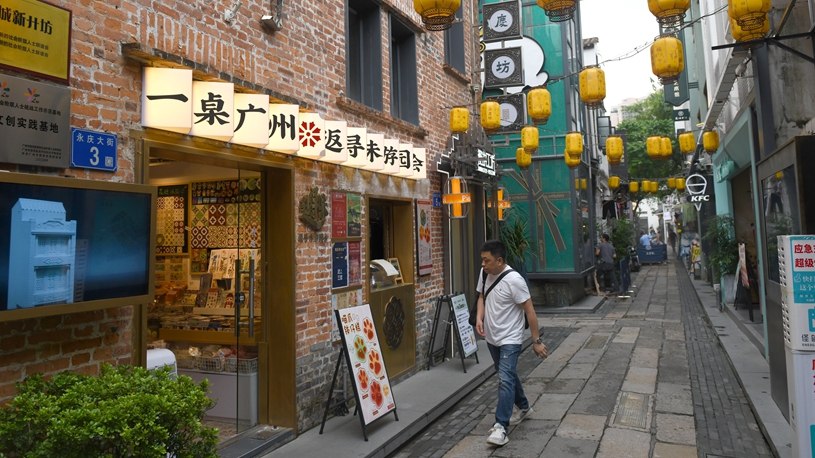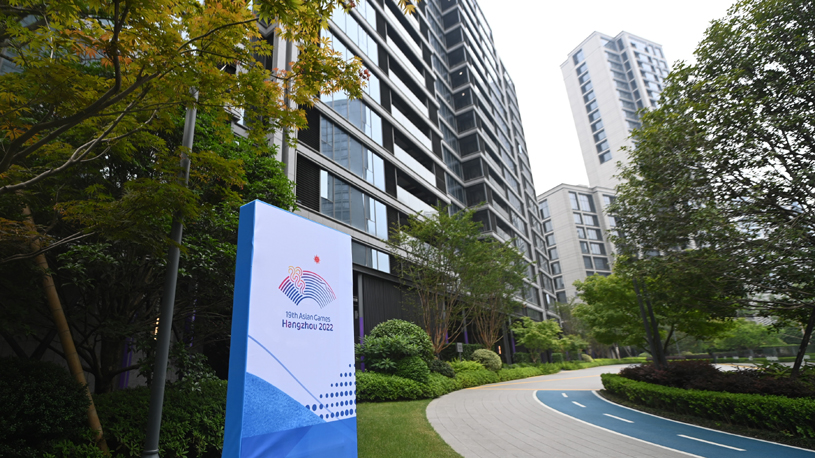
Engineers hoist the last rotor of the Suki Kinari Hydropower project in the Mansehra district of Khyber Pakhtunkhwa province, Pakistan on June 10, 2023. (China Gezhouba Group Corporation/Handout via Xinhua)
Once put into operation, the hydropower plant in northwestern Pakistan would help save 1.28 million tons of standard coal and 3.2 million tons of carbon dioxide emissions annually, and generate socioeconomic impacts that align with green transition.
ISLAMABAD, June 18 (Xinhua) -- Ali Adnan, a 36-year-old engineer, inspects Suki Kinari (SK) Hydropower Project located in Western Himalayas in Pakistan's northwest Khyber Pakhtunkhwa province almost every day to ensure that health, safety, and environment protection protocols are followed properly.
Adnan, a health, safety, and environmental engineer at SK, who has been part of this biggest hydropower project under the China-Pakistan Economic Corridor (CPEC) framework since the beginning of the construction in 2017, said the work has been completed at a faster pace than standard time despite uncountable odds.
SK is a diversion-type hydropower project featuring a high head and long tunnel. The main structures of the project include a dam, spillway, power intake, headrace tunnel, surge shaft, penstock, underground powerhouse, tailrace tunnel, and access tunnel.
The project is equipped with four pelton turbine generator units with a capacity of 221 megawatts each, together with a total installed capacity of 873.5 megawatts.
The state-of-the-art infrastructure has been designed to ensure maximum safety, cost-effectiveness and generation of clean-green energy.

Photo taken on May 15, 2023 shows the dam of Suki Kinari Hydropower project under the China-Pakistan Economic Corridor (CPEC) in Mansehra district, Khyber Pakhtunkhwa province, Pakistan. (CGGC/Handout via Xinhua)
For the first time in Pakistan, a rockfill dam has been built using local boulders and mud, said Jafar Kazmi, a site engineer at the dam. This technology has significantly helped in reducing the overall cost while enhancing safety, he added.
In a concrete dam, the water stoppers have to be put which generally creates seepage. However, he said a drainage body in a rockfill dam in the downstream area serves as a safety wall.
"If any seepage or a crack appears, that may enter the control section and asphalt. It's not going to affect the dam because if any water flows from them, it would go into the drainage body area," according to Kazmi.
The project is expected to generate 3.212 billion kilowatt-hours of electricity annually. Once put into operation, it would help save 1.28 million tons of standard coal and 3.2 million tons of carbon dioxide emissions annually.
Apart from building a hydropower plant for clean-green energy, the Chinese company has been planting a lot of trees in the surrounding area and taking special measures to ensure that the project remains environment-friendly, which is a core component of the Green CPEC.
To prevent the contamination of river water, sedimentation tanks were installed at the batching plants, and filtration plants on the crush plants, Adnan said, adding that "the filtration plant is of the latest technology which has never been used in Pakistan before."
He said the Chinese company is collaborating with the local authorities in tree plantation, especially for preserving wildlife and species. They have also been developing fish ponds for marine life.
The Chinese company aims to plant 100,000 trees by the end of the project's construction.
On top of everything, SK has made an important contribution to the socio-economic development of the local area and the entire country. It will provide affordable and clean-green energy to over 1 million Pakistani families.

Engineers hoist the last rotor of the Suki Kinari Hydropower project in the Mansehra district of Khyber Pakhtunkhwa province, Pakistan on June 10, 2023. (China Gezhouba Group Corporation/Handout via Xinhua)
At the peak of its construction, it had provided employment to more than 6,000 locals.
Tauqeer, a 24-year-old local who works as a laborer at the dam site, said that the project benefited the local people a lot. He said those who were unemployed earlier in this area got jobs from it.
"Chinese are good teachers, and they have taught us the technical skills required for work," he added.
The SK has also substantially contributed to the development of small and medium-sized businesses, particularly in the area's tourism industry.
The dam's construction boosted the tourism industry here by providing accessibility through roads and other infrastructure, Kashan Ali, who works in the administration department of SK, told Xinhua.
Earlier, for about four months, there used to be no accessibility due to heavy snowfall. "But the construction of this dam site has given access to the tourists to visit this place even into the winters and enjoy this snowfall," Ali added.
Furthermore, like all other CPEC projects, SK also pays a lot of emphasis on corporate social responsibility.
Ali said events were also organized in the local schools, where the students were given free books and stationery items. Additionally, the locals were provided with water pipelines through different schemes.
Last year, in the wake of unprecedented floods in the country, "some of the bridges, roads, and other infrastructure got damaged in the area were repaired by the Chinese company using their machinery," said Ali. ■












